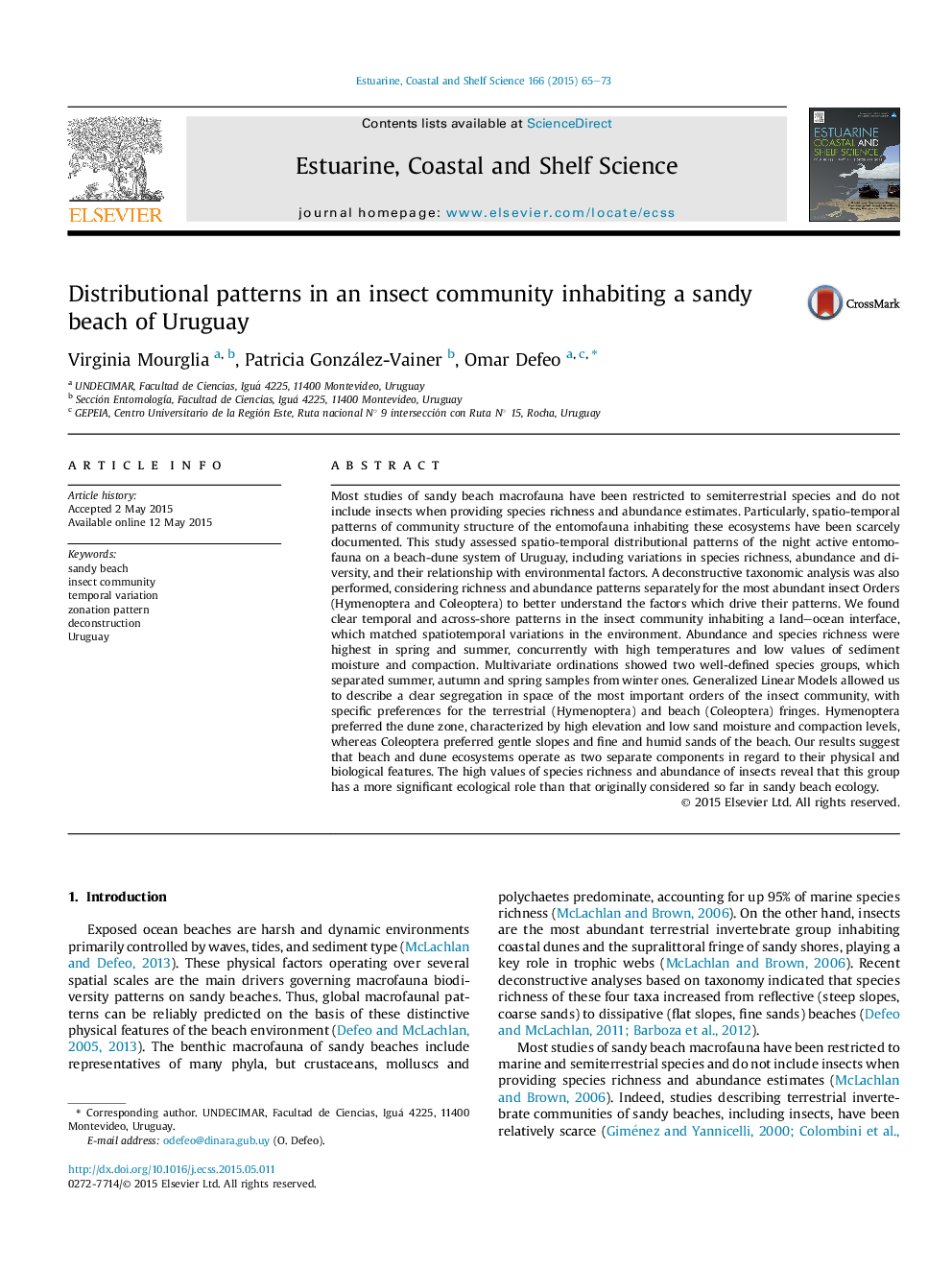| کد مقاله | کد نشریه | سال انتشار | مقاله انگلیسی | نسخه تمام متن |
|---|---|---|---|---|
| 4539364 | 1326593 | 2015 | 9 صفحه PDF | دانلود رایگان |
• Spatio-temporal patterns of an insect community in a sandy beach were assessed.
• Abundance and species richness were significantly highest in summer and spring.
• Hymenoptera and Coleoptera showed contrasting across-shore distribution patterns.
• Ants preferred beach fringes characterized by high elevation and low sand moisture.
• Beetles had a seaward distribution, favoured by finer, compacted and humid sands.
Most studies of sandy beach macrofauna have been restricted to semiterrestrial species and do not include insects when providing species richness and abundance estimates. Particularly, spatio-temporal patterns of community structure of the entomofauna inhabiting these ecosystems have been scarcely documented. This study assessed spatio-temporal distributional patterns of the night active entomofauna on a beach-dune system of Uruguay, including variations in species richness, abundance and diversity, and their relationship with environmental factors. A deconstructive taxonomic analysis was also performed, considering richness and abundance patterns separately for the most abundant insect Orders (Hymenoptera and Coleoptera) to better understand the factors which drive their patterns. We found clear temporal and across-shore patterns in the insect community inhabiting a land–ocean interface, which matched spatiotemporal variations in the environment. Abundance and species richness were highest in spring and summer, concurrently with high temperatures and low values of sediment moisture and compaction. Multivariate ordinations showed two well-defined species groups, which separated summer, autumn and spring samples from winter ones. Generalized Linear Models allowed us to describe a clear segregation in space of the most important orders of the insect community, with specific preferences for the terrestrial (Hymenoptera) and beach (Coleoptera) fringes. Hymenoptera preferred the dune zone, characterized by high elevation and low sand moisture and compaction levels, whereas Coleoptera preferred gentle slopes and fine and humid sands of the beach. Our results suggest that beach and dune ecosystems operate as two separate components in regard to their physical and biological features. The high values of species richness and abundance of insects reveal that this group has a more significant ecological role than that originally considered so far in sandy beach ecology.
Journal: Estuarine, Coastal and Shelf Science - Volume 166, Part A, 5 December 2015, Pages 65–73
